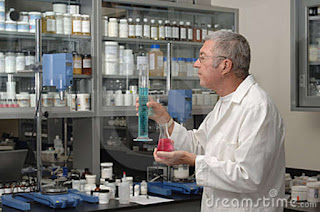The Ostwald process

The Ostwald process is a chemical process which was developed by a German chemist Wilhelm Ostwald in 1902(Yang et al. 1807). The Ostwald process is used in the production of nitrogen-containing substances. It is mainly utilized in the production of nitrogenous fertilizers and pharmaceuticals. The Ostwald process is closely related to Haber process, which gives ammonia (NH 3 ), a raw material for the Ostwald process reactions (Liu et al. 1425). Ostwald process is important chemical process since some chemical processes in the industries are difficult to carry out by other methods. For example, nitric acid is hard to produce on the industrial scale by other means, but through Ostwald process, it is easier. In the initial step of Ostwald process, oxygen and ammonia gas react to form nitrogen monoxide. This first reaction occurs in the presence of catalyst as shown below: The reaction at this step is exothermic. When the reaction is carried out at the laboratory ...

